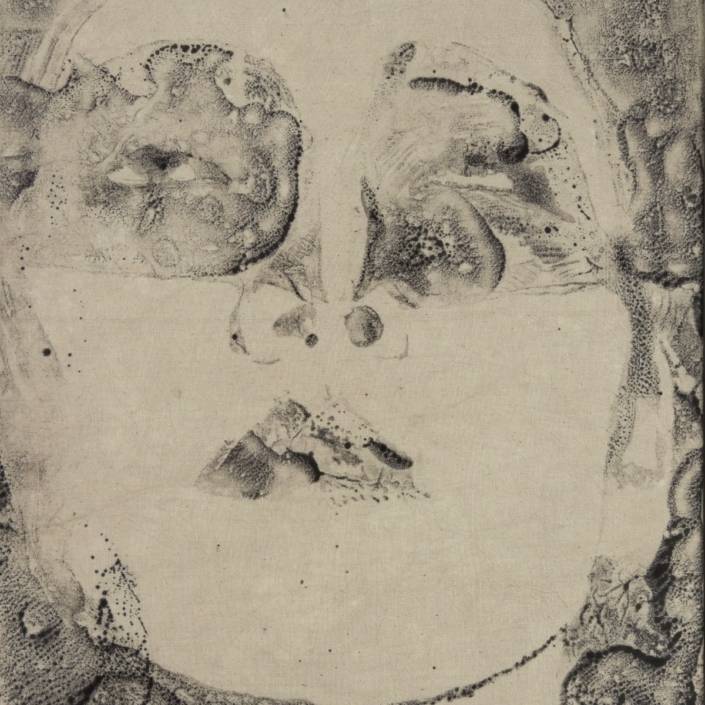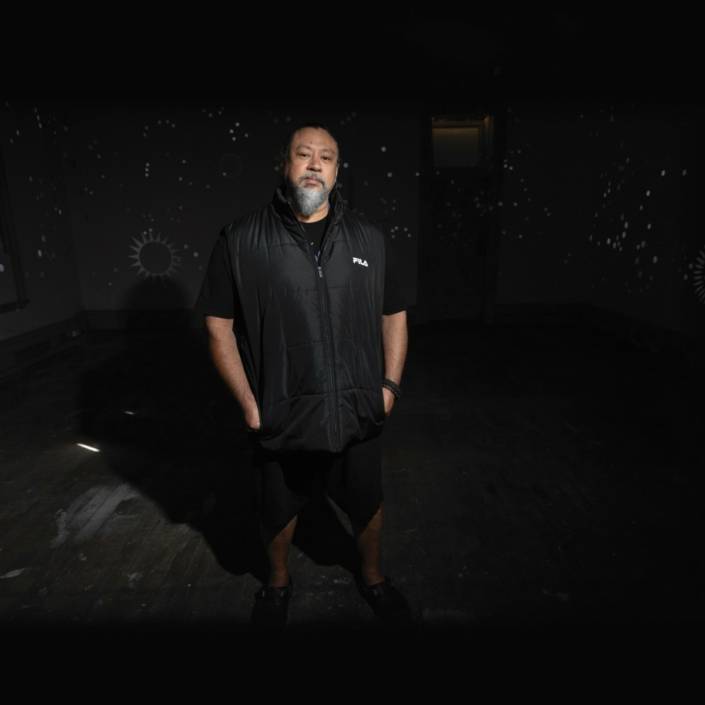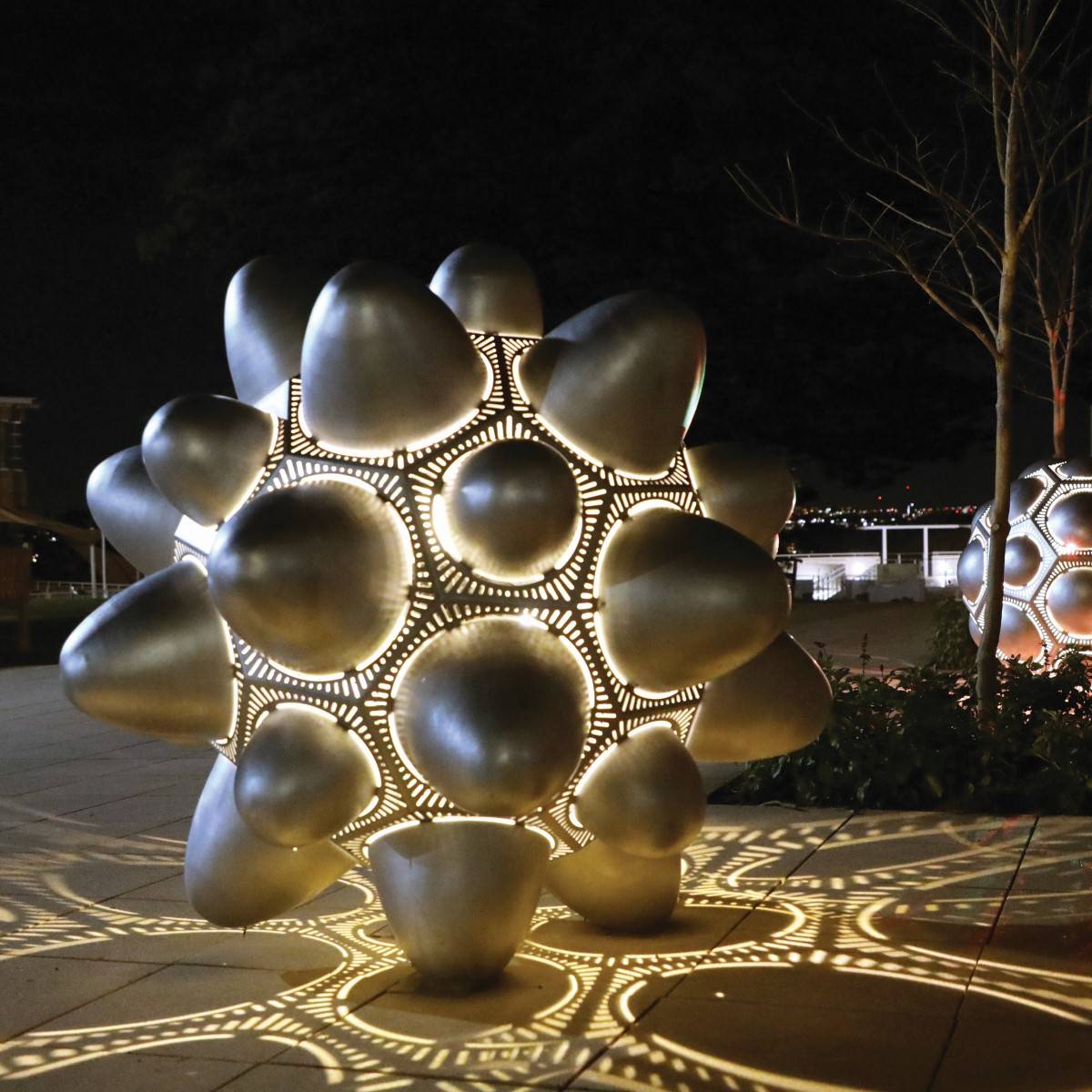Collectors Love: Djakaŋu Yunupiŋu
Collectors voted with their wallets at these sell-out and near sell-out shows.
Words: Judith Ryan AM
In 2021, 72 year-old Djakaŋu Yunupiŋu, one of seven daughters of Gumatj leader Muŋgurrawuy Yunupiŋu, unveiled her first bark paintings of the Djulpan (Seven Sisters), a story she remembered being told by her father. Significantly, like Gija artist Lena Nyadbi, she audaciously limited her palette to nuances of grey, black and white, a first for Yolŋu art. Inspired by the Djulpan story and its philosophy of life, exquisitely rendered by her eldest sister Gulumbu Yunupiŋu as a universe of stars in a celestial space, she chose to focus her bark paintings on the tears of the Djulpan. Her bark paintings introduce figurative iconography of cumulus and cumulonimbus rain clouds. These fluffy curved accents are balanced by filigree lines, lines of dots and delicate stars that echo those of her father and eldest sister. In 2023, Melbourne’s Alcaston Gallery invited Yunupiŋu to present a selection of paintings on bark and larrakitj in her debut solo exhibition titled Gurmilili – Tears of the Djulpan, which was a resounding success.
In her brooding monochrome works, that were on display in Tarnanthi, 2023, Djakanu renders visible an old way of life, one sung and keened by women in ceremony, linking painting, song and dance. The Djulpan, who arrive in the night sky in the harvest season, and who represent Yolŋu women living in harmony with nature, paddled their canoe from island to island, stopping to gather fruit, yams and shellfish, before burning the island to rejuvenate the land, being the first to practice seasonal burning. If Yolŋu burn the land before the Djulpan stars rise in the sky, contravening Yolŋu customary law, the Seven Sisters will be jealous and send rain in the form of their tears to extinguish the fires.
Djakaŋu comes from a distinguished artistic lineage, and together with the late Mrs N. Marawili is largely responsible for transforming Yolŋu art. Rather than reconfiguring pre-ordained miny’tji (clan designs) and ordered sequences of meticulous crosshatching, Djakaŋu and each of her sisters has devised their own style and subject matter inspired by the paintings and stories of their father and their sisters’ achievements, first glimpsed in the Seven Sisters print portfolio of 2011.
Djakaŋu Yunupiŋu is represented by Alcaston Gallery, Melbourne.
Featured image above: Djakaŋu Yunupiŋu, Tears of Djulpan, 2022. Earth pigments on bark, 95 x 63cm. Courtesy: the artist, Buku-Larrŋggay Mulka and Alcaston Gallery, Melbourne.
Featured image below: jakaŋu Yunupiŋu, Tears of Djulpan, 2022. Earth pigments on bark, 186 x 86cm. Courtesy: the artist, Buku-Larrŋggay Mulka and Alcaston Gallery, Melbourne.
This article was originally published in Art Collector issue 107, January-March 2024.












